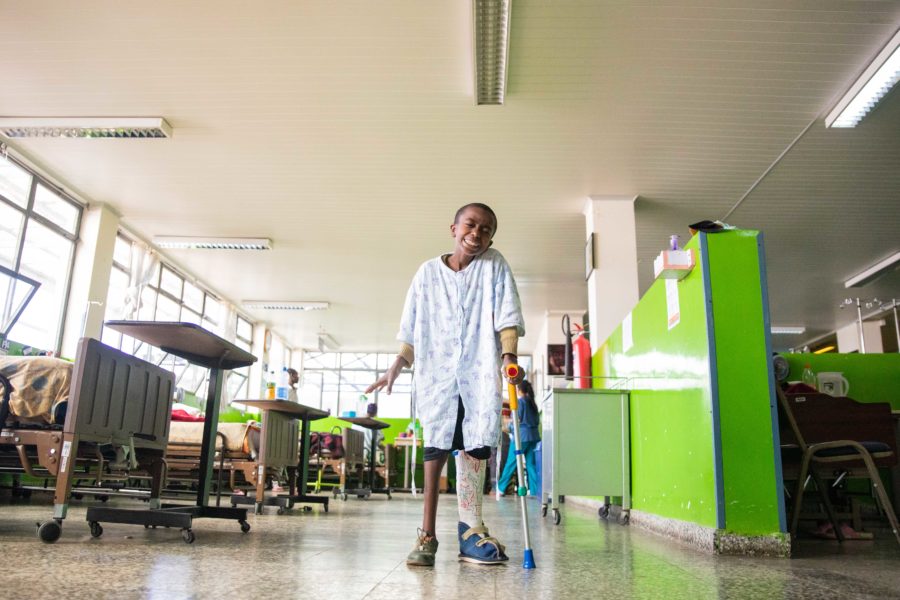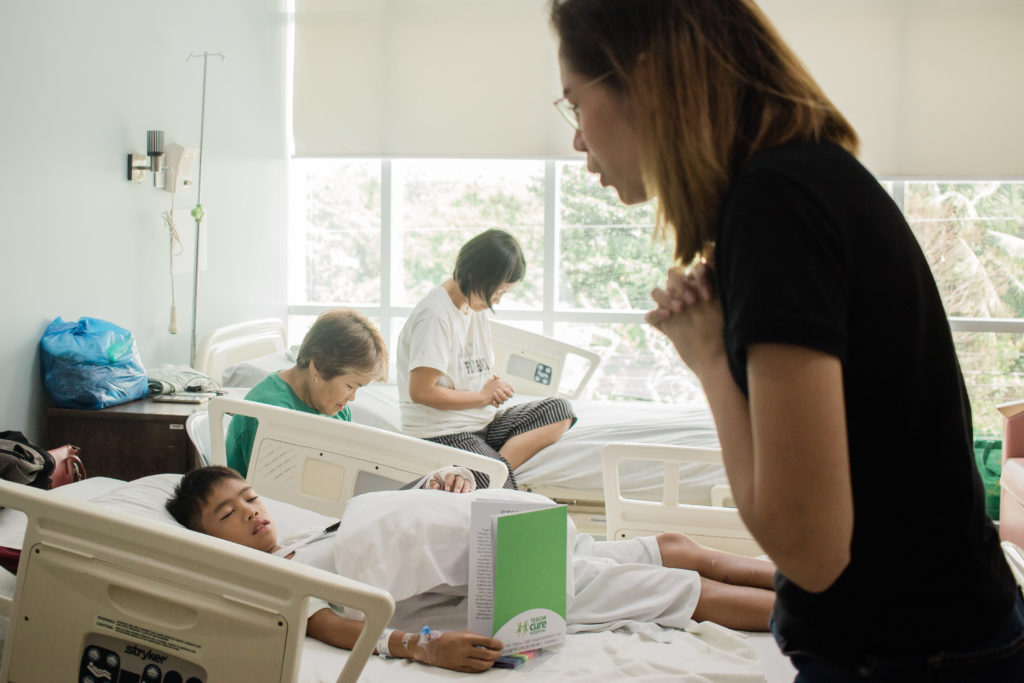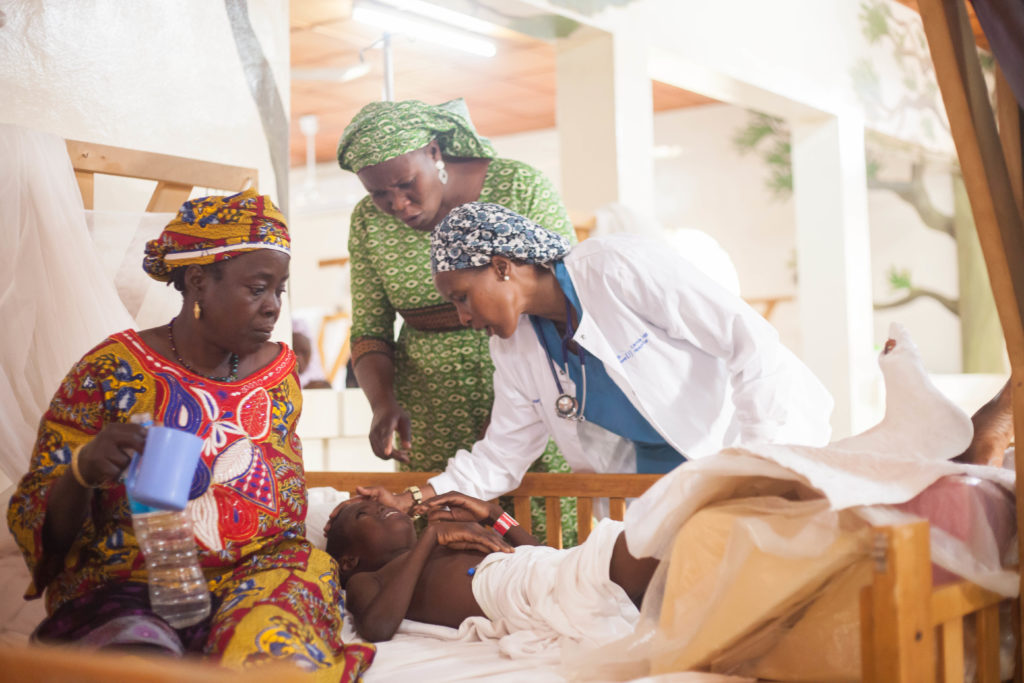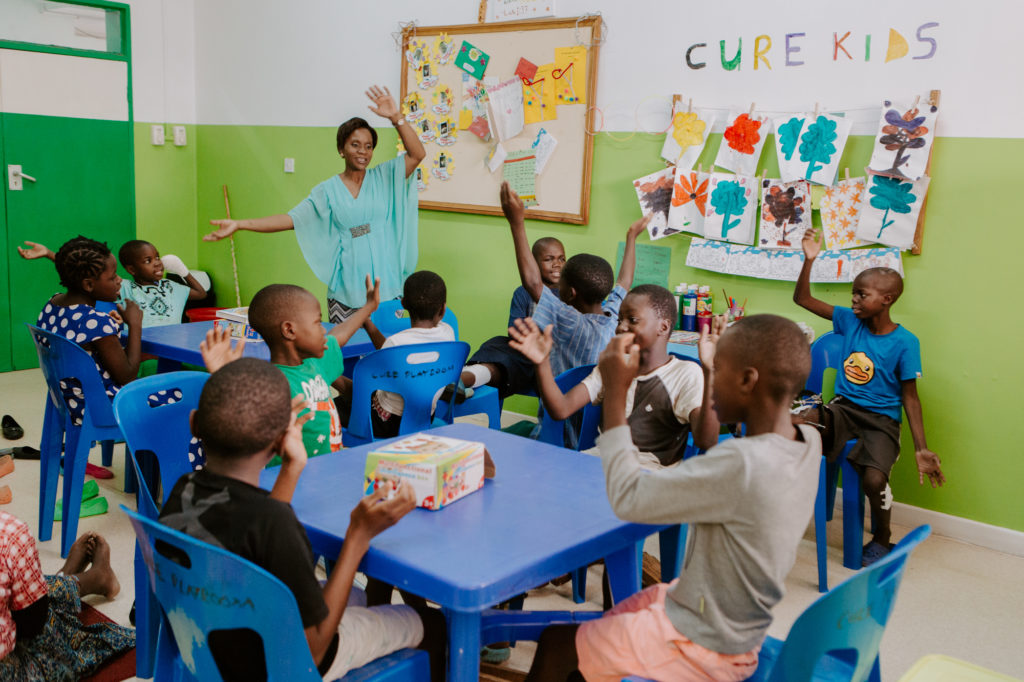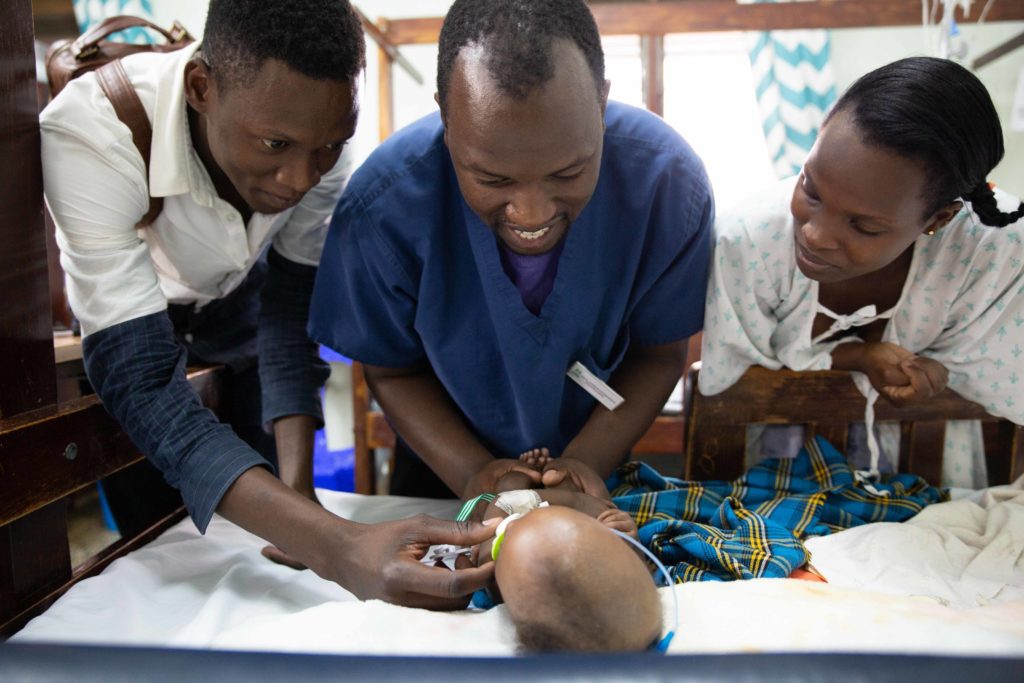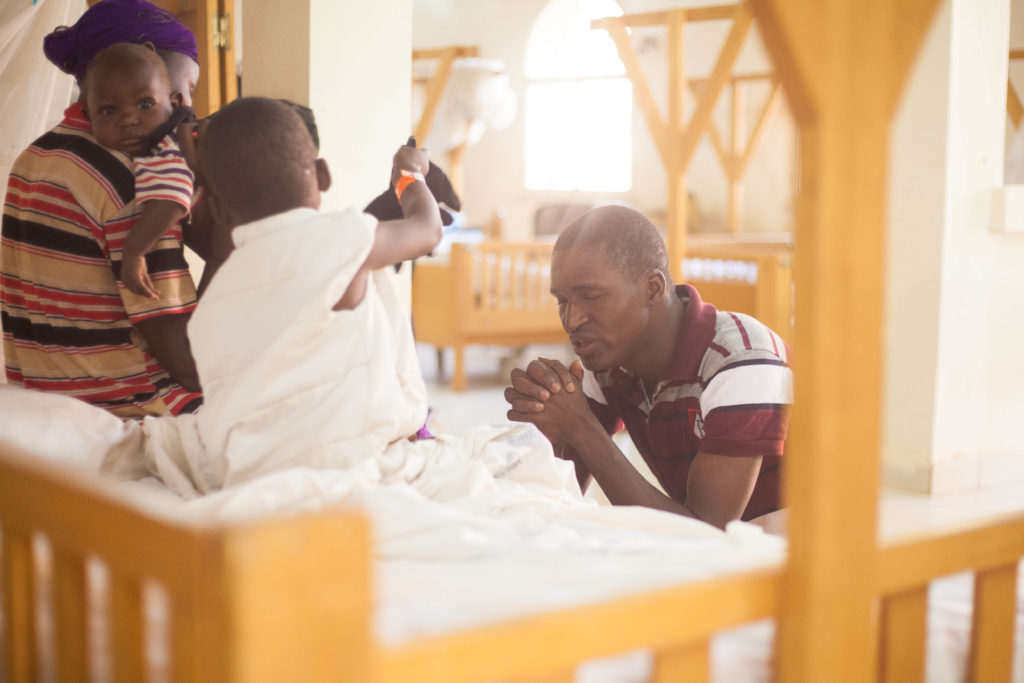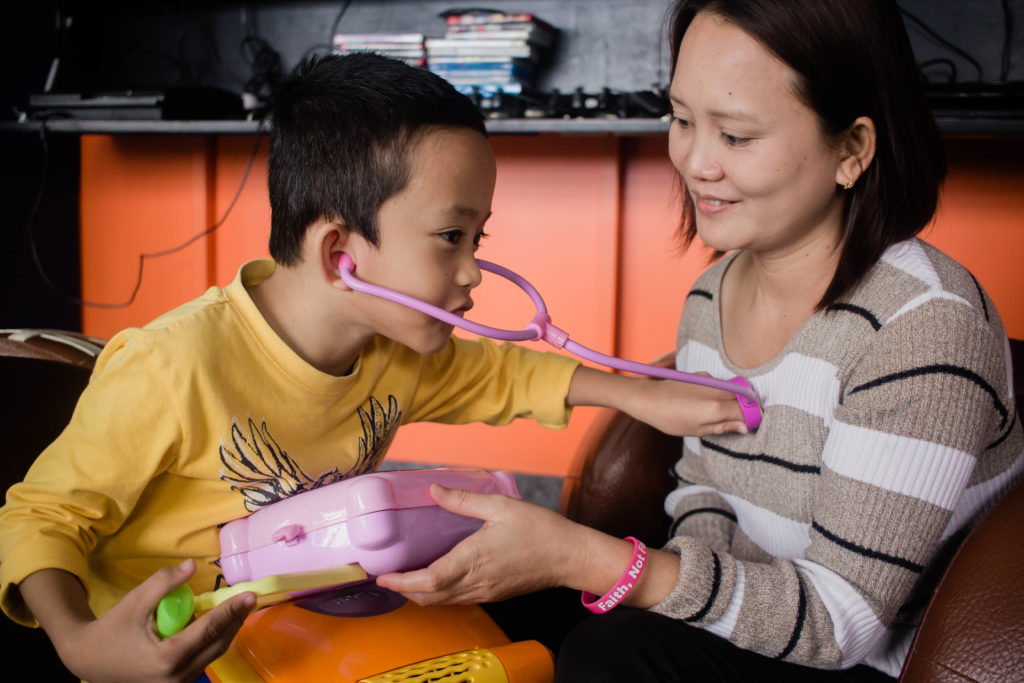A WEEK IN THE LIFE OF A CURE PATIENT
Friday, August 21, 2020 at 3:15 pmDAY ONE: Admission
It’s admission day for a patient who has been living their entire life with a disability which, up until recently, they had no idea was completely treatable. They’re excited at the idea of living a disability-free life, but they’re also terrified. It’s all they’ve ever known, and hospitals in the countries where CURE works don’t often have the best reputation. They’re often viewed as a last resort – a place where people go only to die.
The first person our patients run into is our security guards at the front gate. Security is there to keep the hospital safe and can be scary to a child. But they are aware that their job is also to welcome and reassure frightened and nervous patients.
Now it’s on to the reception area where they’re greeted with another kind face. This stop is more of a reassurance for the patient’s guardian. The process is explained to them, and they’re walked through what to expect over the next few hours and days. It’s a scary process, but a smiling face and a gentle explanation can go a long way.
The next and final stop for the day is the ward. Here the patient is greeted by the nurses and shown to their bed – their home for the next few days.
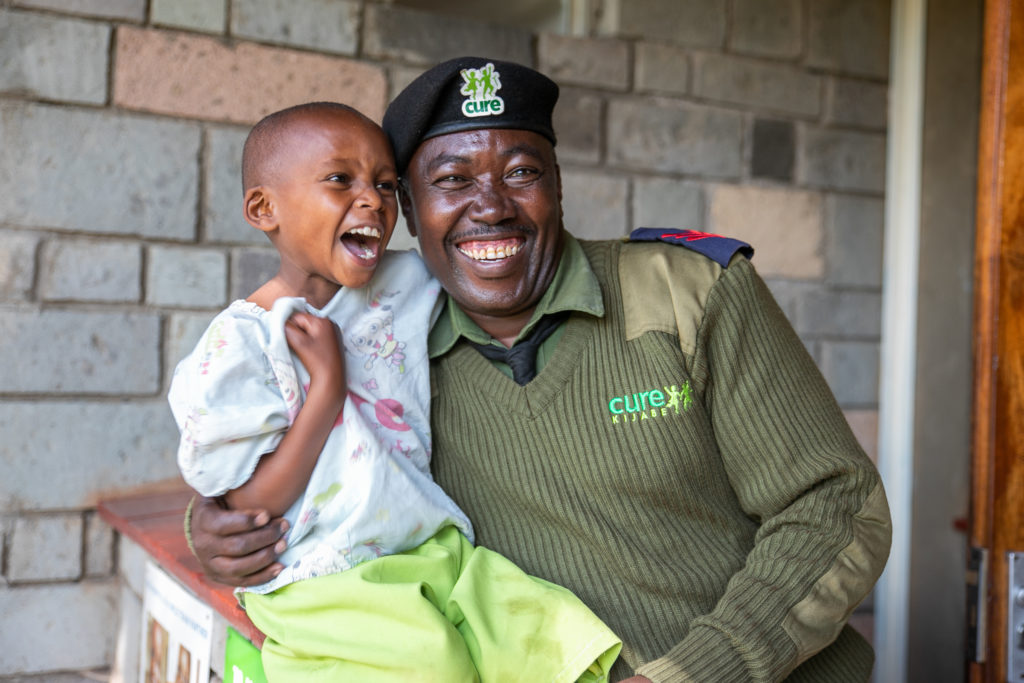
Not long after they’re settled in, the Child Mentor comes to visit. The Child Mentor sits with the patient and gets to know them a little bit: what makes them happy, what makes them sad, and how they’re processing their upcoming, monumental life change. Most importantly, the Child Mentor lets the patient know they are not alone in this. Their parents are there to support them, the Child Mentor is there to support them, and God, the Ultimate Healer, is there for them as well.
The day ends with the child’s surgeon swinging by to introduce themself as it’s been a few days or even weeks since the child’s initial consultation. CURE surgeons understand that their attitude and demeanor can set the tone for a patient’s entire stay. The surgeon keeps things light as the child is checked up on both physically and mentally. It is common to hear laughs, both of the child and surgeon, dispersed throughout a checkup.
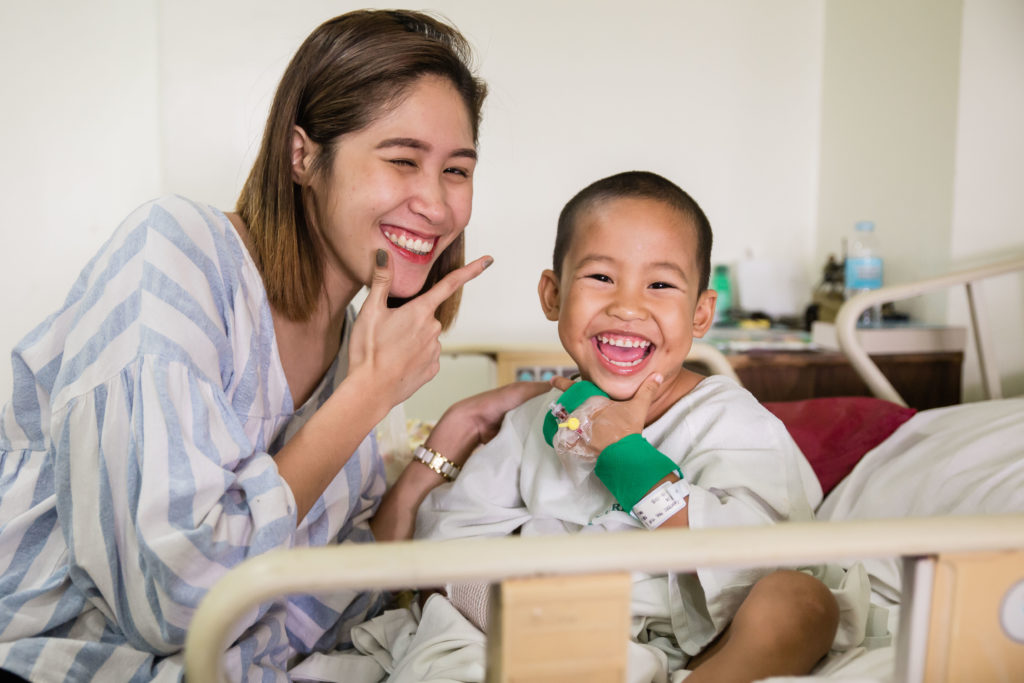
DAY TWO: Surgery
The day of surgery starts with an early morning visit by the surgeon to perform one last check and provide a little boost of confidence to get through the day. The spiritual team is not far behind. They stop by to check how the patient and guardian are dealing with the pre-op jitters and will often pull out a copy of the Surgery Preparation Book. This picture book shows the patient the rooms, equipment, and people they’re about to experience, and it gives the spiritual staff a chance to explain the process. The book is intended to put the child at ease, but it often helps relax the parent as well. It can be nerve-wracking to entrust your child’s life to relative strangers.
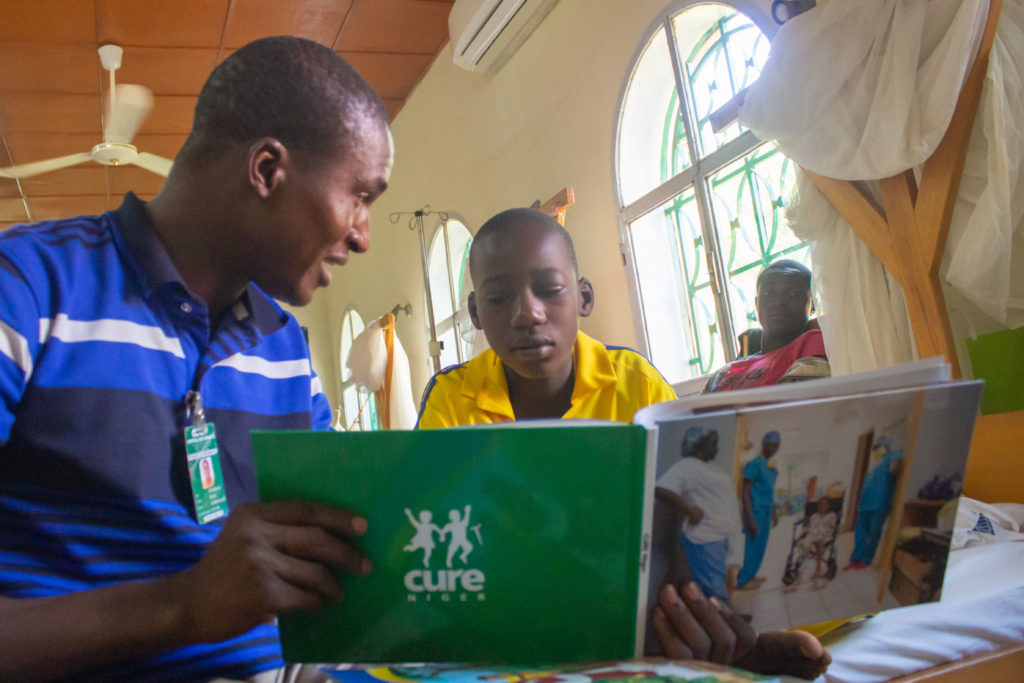
Once the child is in the operating room, and everything is prepped, the surgeon gathers the surgical staff to pray asking for peace and guidance during the surgery, and for the child after surgery.
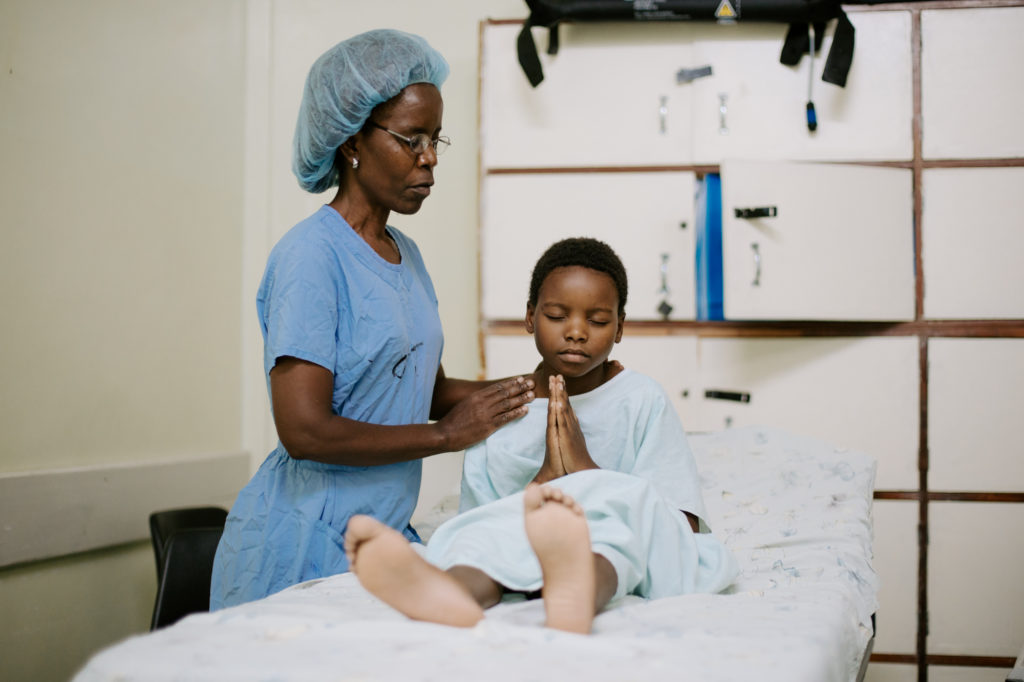
After surgery, there is constant observation of the patient by the ward nurses as the patient sleeps off the anesthesia drugs. Meanwhile, the kitchen staff prepares a nutritious meal for the patient to support a healthy recovery. Many of the children that show up at CURE hospitals are severely undernourished – not just a lack of available calories, but also a lack of available nutrients. The kitchen works hard to get the children healthy enough for surgery, and then to keep them nourished for a successful recovery.
Day Three: Recovery
The first-day post-op is the most challenging day of a child’s stay at a CURE hospital. There’s still some residual surgical discomfort and even though the nurses and anesthesiologists have a thorough pain management plan to keep things bearable, it’s never fun. On top of this, most patients are experiencing the restrictive confinement of having a cast or frame on for the first time in their life. It’s a lot to take in.
Day Four: Exploration
On the second-day post-op, things begin to look up. The pain has lessened, and the patient is feeling well enough to get out of bed and explore the ward a little in their wheelchair. This is the day that relationships in the ward begin to blossom. Over the past few days, patients have seen each other around and maybe even had a few interactions. Now that they’ve regained some mobility, the kids start to play and form friendships. While they’re all from different parts of the country, different tribes, and sometimes different languages, they all know what it’s like to be discriminated against because of a physical disability. For the first time in their lives, they’re surrounded by kids like them. Kids who know what it’s like to be excluded and teased. So, at CURE hospitals, no one is left out!
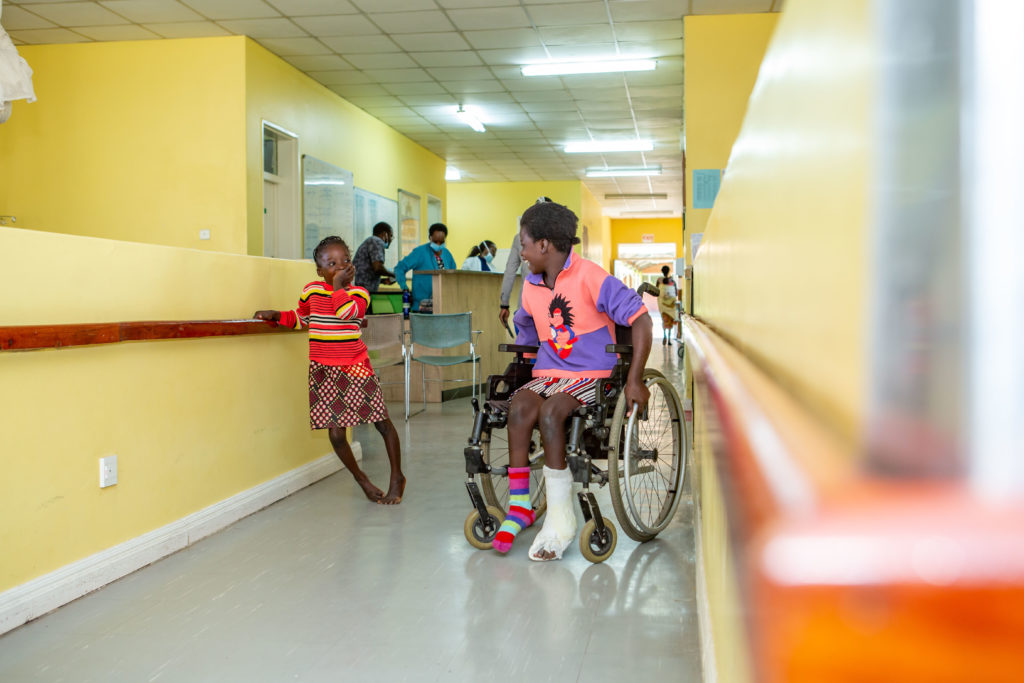
Each CURE hospital has a playroom of some shape or form run by the spiritual team. It’s a place where the kids can gather to play, sing, do crafts, and even learn a little bit about school topics, themselves, and God!
This day of exploration gets better when the doctors come on their post-op rounds and decide the patient is ready to start physical therapy! Most patients, after a day or two of rest, are strong enough to receive their crutches or walkers and begin to get some of their independence back. Our physical therapy teams are excellent at working with children and know how to break overwhelming tasks down into small, manageable challenges.
Day Five: Departure
While post-op is often the lowest point for patients, the day of departure is undeniably the high point. Early in the morning, the patient will see the surgeons on ward rounds and get their official discharge! Over the course of their stay, the surgeons and the children have had multiple interactions, and the surgeons have become God’s tool of transformation in the child’s life. It’s not uncommon to hear a child claim they want to become a doctor when they finish school so they can help people just like the CURE doctors helped them!
The children generally have one more appointment with the physical therapists to learn exercises they can do at home to help them in their recovery. Then they’re off to see our pharmacist who will make sure they leave with the medication needed for a quick and strong recovery.
Before leaving, the spiritual team stops by to give the child a CURE Care Kit, which includes a stuffed animal, a small hygiene kit, crayons, and a coloring book about Jesus. Receiving this present is always a highlight for patients, and it’s also a way for us to proclaim the kingdom of God beyond our hospital walls and out into the villages and communities in the countries we serve!
Every patient’s healing journey is different, but all children leave CURE transformed and knowing they are loved both by us and by God.
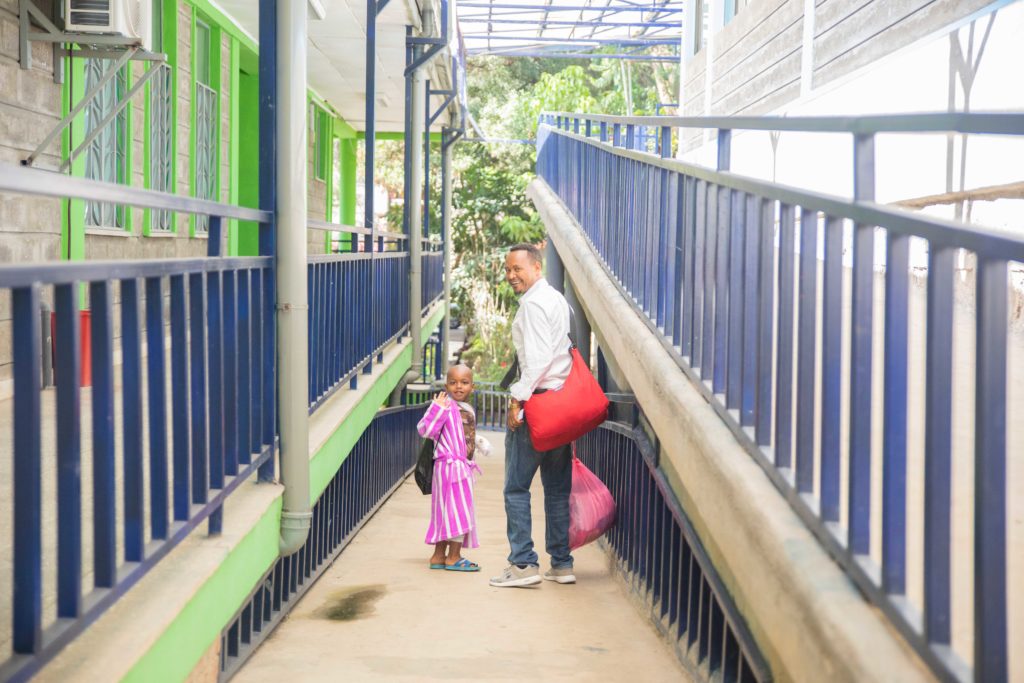
Related Articles
- Expecting a Blessing: After Years of Waiting, Evance Receives Clubfoot Surgery
- From Pain to Peace Because of You
- BBC News Features CURE Uganda’s Shuntless Solution for Hydrocephalus
- Living Her Dreams: New Milestones, New Beginnings, and Abundant Blessings
- This is Carmen!
- Eda’s Dream: A Young Girl’s Journey to Healing and Her Goal of Becoming a Nurse
